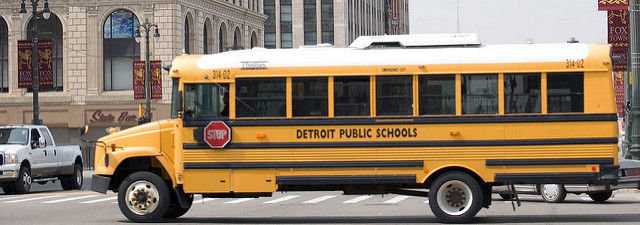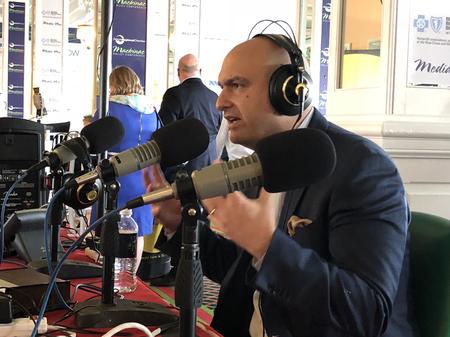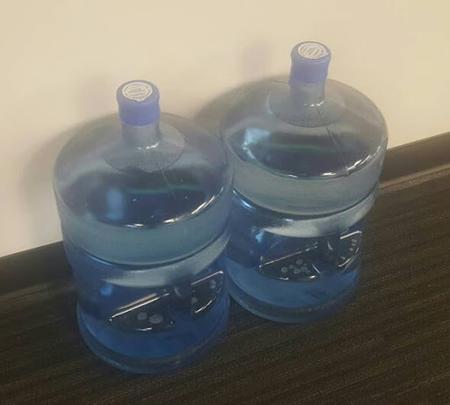Detroit Fights Lead, Copper in Public School Water
Detroit public school officials are shutting off drinking water at all 106 district buildings after finding elevated levels of lead and copper. Cause yet to be determined. Water coolers are now in all school buildings.

Public school students in Detroit have been facing a heat wave. And they’ve been finding that the water fountains near classrooms are not working.
That’s on purpose. Detroit officials shut off the drinking water in school buildings after recent testing discovered elevated levels of lead and copper.

News of that contamination greeted students starting the school year. At the Detroit School of Arts, student Dayana Williams was armed and ready to begin classes.
She brought her notebook, her backpack. And she made a special point to bring her own bottled water.
Public school officials are stationing water coolers throughout all of the district’s buildings. There’s a new one just down the hallway from Williams.
But she says she’s heard reports that lead and copper was found in school bathrooms and water fountains.
And Williams is taking no chances.
”I have a history of passing out from dehydration, so I’m still worried about, like, if the water will be turned back on,” Williams says. “But at the same time I can’t do nothing about it. At least (they) have coolers here for us to drink. So I’m just going to have to deal with it.”
Officials say students can wash their hands with the water in school buildings, just not drink it.
It’s a problem at aging schools across the country.
But finding it in the Motor City created immediate concern for the leadership of the Detroit Public School Community District.
Superintendent Nikolai Vitti says higher-than-normal amounts of lead and copper were found this year and over the past few in the water at 34 of 50 Detroit public schools.
So Vitti ordered all 106 schools tested, then turned off the drinking water in the buildings while engineers try to figure out if the contamination is coming from old pipes or rusty faucets.
“The solution is not a whack-a-mole effect of ‘Let’s take out that water fountain or that sink.’ That’s not a long-term solution. And in-between testing we can’t say, ‘Well, unfortunately students were exposed to higher levels of copper or lead.’ That’s why we discontinued everything. Because I was seeing concerns in new schools and old schools,” Vitti says.

But for Detroiters like Patricia Taylor, the mere mention of “lead-tainted water” raises the specter of the crisis that plagued a city a few miles to the north.
“What is this, another Flint?”
Taylor says she has eight grandchildren in Detroit’s public school system.
And she says she’s been supplying them all with bottled water for years.
Taylor says she and her family just don’t trust the pipes in aging Detroit school buildings.
“My grandkids, now they don’t drink water at school at all because they feel that there’s something wrong with it. It was rusted a long time ago,” Taylor claims. “Rust was coming out the water and I seen it with my own eyes.”
As for the lead and copper contamination, officials say it will take months to pinpoint the cause, let alone determine how much it might cost to fix it.
